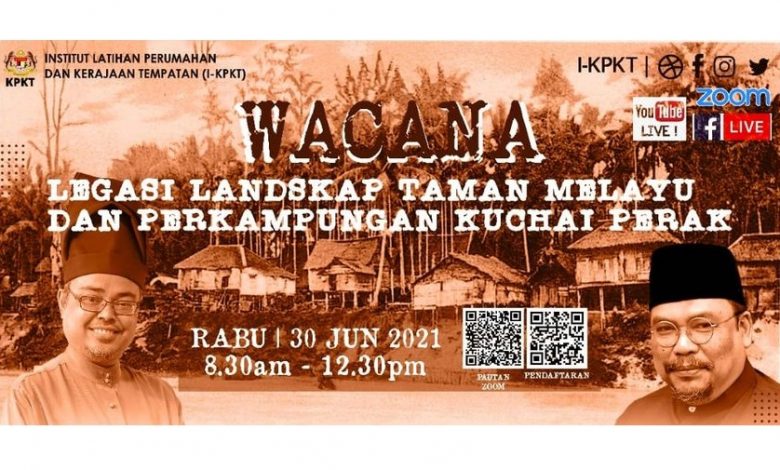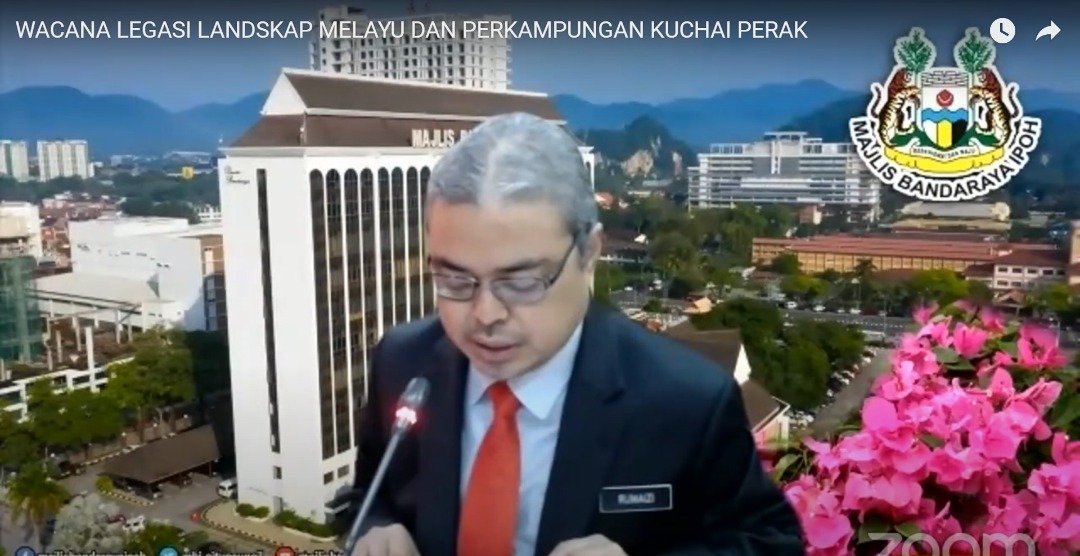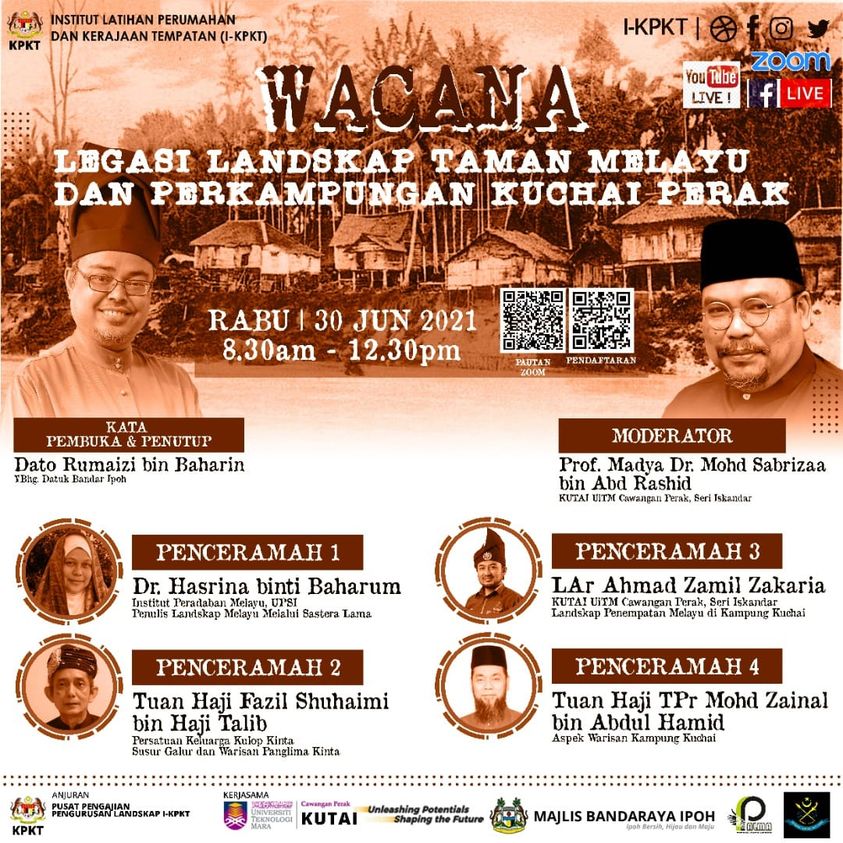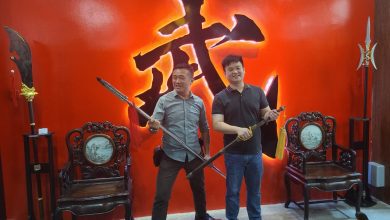

An academic discussion on the history of Malay heritage in Ipoh titled “Wacana Legasi Landskap Taman Melayu dan Perkampungan Kuchai Perak” was held online recently by the Training Institute of Housing and Local Government (I-KPKT) in collaboration with the Ipoh City Council (MBI) and Universiti Teknologi Mara (UiTM) Perak Campus.
It was aimed to highlight the historical heritage of the Malays and increase knowledge of city development heritage.
The issues of heritage conservation for the future generations and details of the city’s history were discussed among others.
Associate Professor Mohd Sabrizaa Abd Rashid from the Centre for Knowledge & Understanding of Tropical Architecture & Interior (KUTAI) of UiTM Perak Branch acted as the moderator.


According to earlier records, there were a few villages along the Kinta River such as Kampung Pisang (now known as Medan Istana), Kampung Ipoh, Kampung Masjid Lama, Kampung Paloh, Kampung Jawa and Kampung Kuchai.
“Kampung Kuchai, which borders the Kinta River, Jalan Datoh, Jalan Onn Jaafar and Jalan Masjid is the only heritage land of the Malays which still exists in the middle of the city.
“It was a spot of early settlement of the Malays. It used to be a stop-by spot for royalty and traders besides a lively location for various economic activities.
“However, the village is currently in a neglected state.
One of the participants, President of Persatuan Keluarga Kulop Kinta, Fazil Shuhaimi Talib stated that Kampung Paloh and Kampung Kuchai were among the earliest Malay settlements with residents like the second Panglima of Kinta, Toh Changkat Saga and fourth Panglima of Kinta, Toh Paloh since the early 1700s.
During the colonial era, Kampung Paloh/Kuchai was a progressive Malay settlement as it was a focus of the royalty (Raja) and Malay leaders (pembesar-pembesar Melayu).
According to him, the tombs of eight Panglima of Kinta including Tok Changkat Saga and the fifthteenth Panglima of Kinta, Dato’ Tahwil Azar are also located at Kampung Paloh.
“The area also housed two main mosques of Ipoh, the Masjid Panglima Kinta (Madrasah Kamaliah) and Masjid Paloh (Madrasah Sharipah), the earliest Malay school and a few houses of the Malay leaders.
“It was also the centre of Ipoh Malay community activities including politics such as the establishment of Perak UMNO (United Malays National Organization) pioneered by Datuk Panglima Bukit Gantang Wahab who was also the first Menteri Besar of Perak from 1948 till 1957,” he stated.
Fazil Shuhaimi added that the Rumah Kedai Wakaf Toh Puan Saripah (traditional shophouses) along Jalan Datoh is an example of city development by Malays in Ipoh.
“These shophouses used to be the office of Warta Kinta Newspaper, Persatuan Melayu Perak, All-Malay Muslim Missionary Society (Kinta Branch), Malay Drivers Association of Perak, Malay Badminton Association of Perak and Persatuan Bawean,” he said.
“Prior to this, there were suggestions to develop Kampung Kuchai by government agencies and non-governmental organisations (NGO) but it was faced with obstacles like legal issues, land ownership and special allocation which prevented the matter from being carried out quickly,” he expressed.
According to Rumaizi, researchers from KUTAI UiTM, together with a few government organisations including MBI, have made the effort to preserve the history of Kampung Kuchai with assistance from I-KPKT, Persatuan Landskap Awam Malaysia, the Department of National Heritage and Persatuan Keluarga Kulop Kinta.
He shared that the collaboration would also form a platform to generate ideas for strategic cooperations in the city’s development plan.
Rosli Mansor
===========================
Get your local news fast. Download the Ipoh Echo App on your mobile. Available on both Google Playstore and Apple Appstore.



